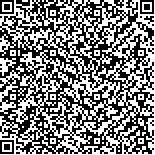欧阳瑶,朱其秀,阎文静,等.高频重复经颅磁刺激对单侧大脑半球卒中后患者吞咽障碍的影响[J].中华物理医学与康复杂志,2019,41(4):261-265
扫码阅读全文

|
| 高频重复经颅磁刺激对单侧大脑半球卒中后患者吞咽障碍的影响 |
|
| |
| DOI:DOI:10.3760/cma.j.issn.0254-1424.2019.04.005 |
| 中文关键词: 重复经颅磁 吞咽障碍 脑卒中 表面肌电图 |
| 英文关键词: Repetitive transcranial magnetic Dysphagia Stroke Surface electromyography |
| 基金项目: |
|
| 摘要点击次数: 6766 |
| 全文下载次数: 6643 |
| 中文摘要: |
| 目的 研究高频重复经颅磁刺激对健侧大脑半球舌骨上肌群皮质对应区的兴奋作用,以及对单侧大脑半球卒中后患者吞咽障碍的疗效。 方法 选取非急性期单侧大脑半球卒中后吞咽障碍患者40例,采用随机数字表法将其分为试验组和对照组,每组患者20例,试验组采用5 Hz高频经颅磁刺激相对健侧大脑舌骨上肌群皮质对应区结合传统吞咽康复训练,对照组仅予以传统吞咽康复训练。于治疗前和治疗2周后(治疗后)对2组患者行吞咽X线荧光透视检查(VFSS)和表面肌电图(sEMG)检查和分析,并以标准吞咽功能(SSA)评价量表、VFSS评价量表、渗透-误吸(PAS)评价量表进行疗效评估。 结果 治疗后,2组患者sEMG的吞咽时程和最大波幅以及SSA、PAS、VFSS评分与组内治疗前比较,均显著改善,差异均有统计学意义(P<0.05)。治疗后,实验组患者sEMG的吞咽时程和最大波幅以及SSA、PAS、VFSS评分分别为(1.50±0.30)s、(0.40±0.12)mV、(20.30±2.25)分、(2.00±1.69)分和(8.75±1.29)分,与对照组治疗后比较,差异均有统计学意义(P<0.05)。 结论 采用5Hz高频经颅磁刺激健侧大脑半球舌骨上肌群皮质对应区,可有效地改善单侧大脑半球卒中后患者的吞咽障碍。 |
| 英文摘要: |
| Objective To explore the effect of high-frequency repetitive transcranial magnetic stimulation (rTMS) on activity in the intact motor cortex controlling the suprahyoid muscles and thus on dysphagia after an unilateral stroke. Methods Forty patients suffering dysphagia more than two weeks after a unilateral cerebral stroke were randomly divided into an experimental group and a control group, each of 20. Both groups were given traditional swallowing rehabilitation training, while the experimental group was additionally provided with 5 Hz rTMS for two weeks. Before and after the treatment, all of the patients were characterized using X-ray fluoroscopy, video fluoroscopic swallowing study (VFSS) and surface electromyography, and their swallowing was evaluated using a standardized swallowing assessment (SSA) and a penetration-aspiration scale (PAS). Results After the treatment, significant improvement was observed in both groups in the average swallowing time and in the maximum amplitude of sEMG, as well as the average SSA, PAS and VFSS scores (P<0.05). The average values in the experimental group were in all cases significantly better than the control group′s averages (P<0.05). Conclusion Applying rTMS at 5 Hz to the motor cortex of the contralateral hemisphere controlling the suprahyoid muscles can effectively improve unilateral-hemisphere dysphagia after stroke. |
|
查看全文
查看/发表评论 下载PDF阅读器 |
| 关闭 |